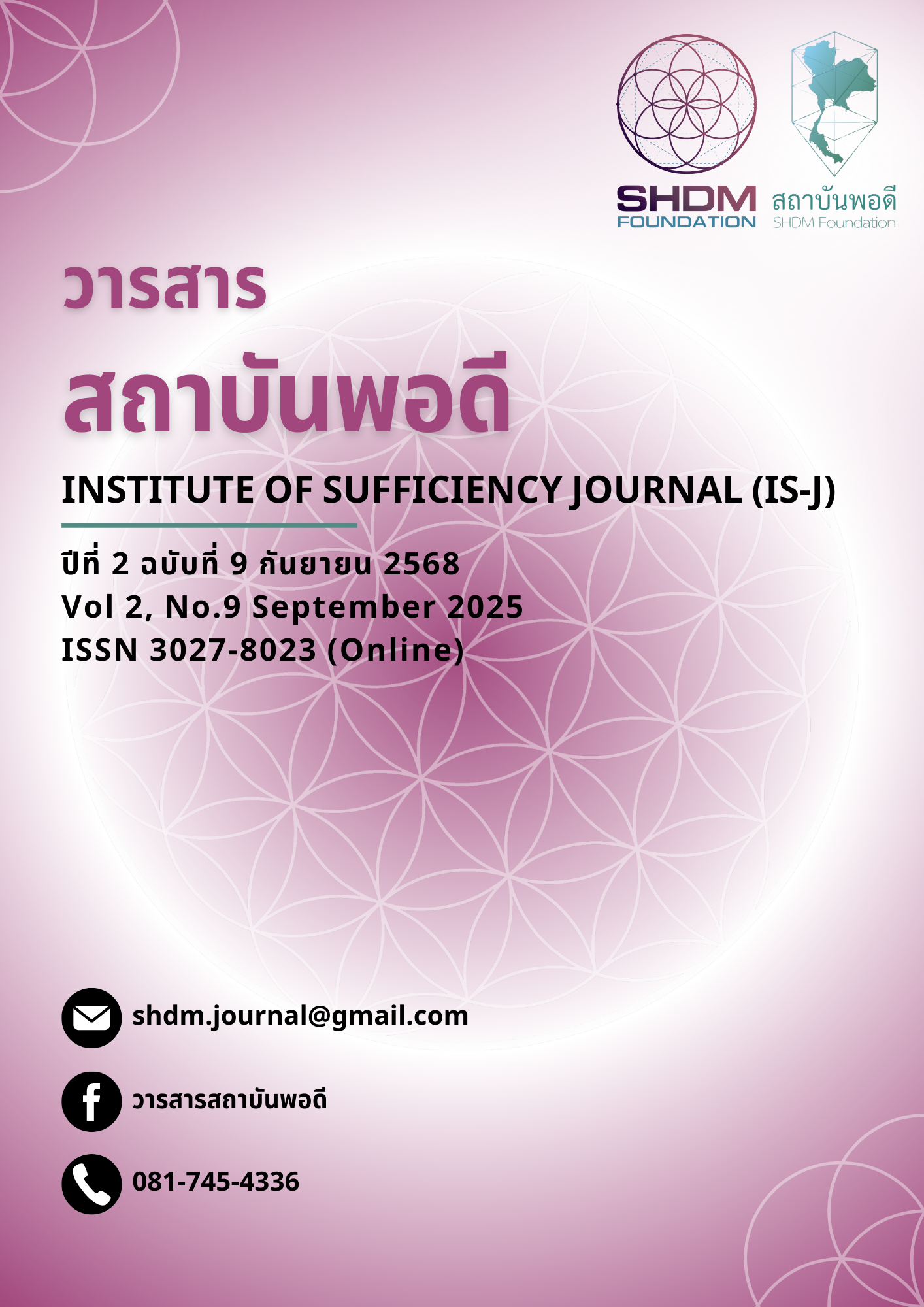Leadership Development through the Perfection of Viriya Parami
Keywords:
Development, Leadership, Leadership Development, Viriya ParamiAbstract
This research aimed to analyze the concept of Viriya Parami according to Theravada Buddhism. A documentary research design and philosophical research methodology were employed, including Buddhist philosophical analysis, hermeneutics, and reflexive thinking, based on Buddhist scriptures and relevant academic works. The findings revealed that Viriya Parami encompassed dimensions of perseverance, endurance, and self-sacrifice for the highest goal, and was closely related to the Four Right Efforts (Sammappadhana). It could also be linked to leadership attributes such as goal commitment, resilience, inspirational leadership, and ethical leadership. The synthesis led to the development of the “VIRIYA Leadership Model,” which consisted of five dimensions: Vision, Integrity, Resilience, Inspiration, and Yielding Action. The new knowledge from this research indicated that Viriya Parami could be developed into a conceptual framework for contemporary leadership grounded in morality and inner strength, which not only addressed theoretical gaps in academic studies but also provided a practical guideline for leadership development in Thai society and the global context toward sustainability.
References
จุลศักดิ์ ชาญณรงค์. (2566). การสร้างบุญบารมีตามหลักธรรมในพระพุทธศาสนาสำหรับสังคมผู้สูงอายุ. วารสารสังคมศาสตร์ มหาวิทยาลัยศรีนครินทรวิโรฒ, 26(1), 13–30.
ชวัลวิทย์ อรณุปราการ, นวลวรรณ พลูวสุพลฉัตร และ สรวิชญ์ วงษ์สอาด. (2564). การใช้บารมี 10 ในการพัฒนาตนเองและสังคม. วารสารวิชาการมหาจุฬานาครทรรศน์, 8(2), 45–60.
พุทธชญานันท์ จันทร์โสม. (2557). การพัฒนาภาวะผู้นำตามหลักบารมี 10. กรุงเทพฯ: มหาวิทยาลัยมหาจุฬาลงกรณราชวิทยาลัย.
พระมหาสมศักดิ์ ญาณโภโค และ ธานี สุวรรณประทีป. (2560). การเสริมสร้างวิริยะบารมีสำหรับเยาวชนไทยในสังคมปัจจุบัน. วารสารพุทธโฆสะวิชาการ, 3(1), 70–85.
เอกชัย อุไรสินธว์. (2564). แนวปฏิบัติตามปฏิปทาของพระโพธิสัตว์ในสังคมไทยปัจจุบัน. วิทยานิพนธ์ศิลปศาสตรมหาบัณฑิต. กรุงเทพฯ : มหาวิทยาลัยธรรมศาสตร์.
Bass, B. M. (1990). From transactional to transformational leadership: Learning to share the vision. Organizational Dynamics, 18(3), 19–31.
Greenleaf, R. K. (2002). Servant leadership: A journey into the nature of legitimate power and greatness. Paulist Press.
Duckworth, A. L. (2016). Grit: The power of passion and perseverance. Scribner.
Yukl, G. (2013). Leadership in organizations (8th ed.). Pearson.
Dinh, J. E., Lord, R. G., Gardner, W. L., Meuser, J. D., Liden, R. C., & Hu, J. (2014). Leadership theory and research in the new millennium: Current theoretical trends and changing perspectives. The Leadership Quarterly, 25(1), 36–62.

Downloads
Published
How to Cite
Issue
Section
License
Copyright (c) 2025 Institute of Sufficiency Journal

This work is licensed under a Creative Commons Attribution-NonCommercial-NoDerivatives 4.0 International License.


